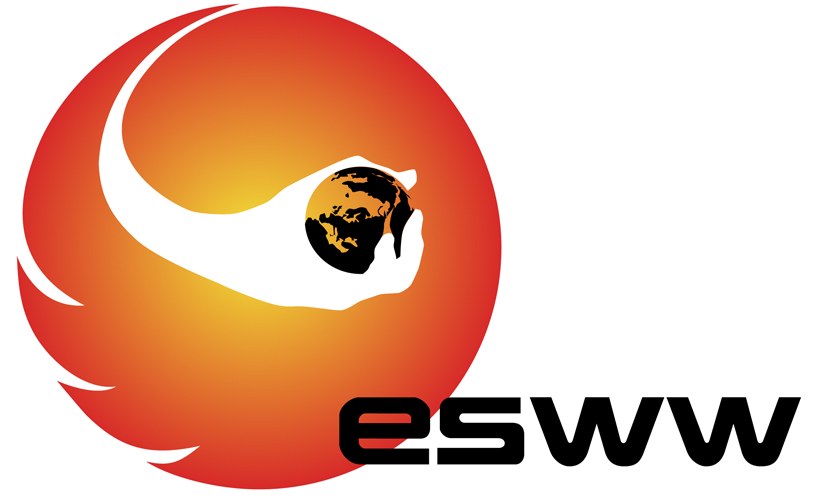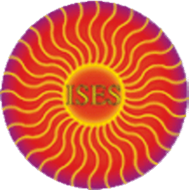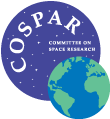
16-20 November, 2009 - Brugge, Belgium
| Session: | Session 1 Space Weather and Space Situational Awareness (01) |
| Type: | Oral session |
| Date: | 16 November 2009 |
| Time: | 14:30 - 18:00 |
| Chair: | A. Hilgers and Y. Prado |
| Co-chair: | |
| Remarks: | Coffee break at 16:00 |
| Seq | Time | Title | Abs No | |||||||||||||||||||||||||||||||||||||||||||||||||||||||||||||||||||||||||||||||||||||||||||||||||||||||||||||||||||
| 10:00 | Training Course | |||||||||||||||||||||||||||||||||||||||||||||||||||||||||||||||||||||||||||||||||||||||||||||||||||||||||||||||||||||
| 12:30 | Lunch | |||||||||||||||||||||||||||||||||||||||||||||||||||||||||||||||||||||||||||||||||||||||||||||||||||||||||||||||||||||
| 13:30 | Welcome | |||||||||||||||||||||||||||||||||||||||||||||||||||||||||||||||||||||||||||||||||||||||||||||||||||||||||||||||||||||
| 1 | 14:30 |
Space Situational Awareness ? Space Weather Segment
Luntama, J.P. ESA, NETHERLANDS The overall objective of the Space Situational Awareness (SSA) of the European Space Agency (ESA) is to support the European independent utilisation of and access to space research or services. This will be performed through providing timely and quality data, information, services and knowledge regarding the environment, the threats and the sustainable exploitation of the outer space surrounding the planet Earth. SSA serves the implementation of the strategic missions of the European Space Policy based on the peaceful uses of the outer space by all states, by supporting the autonomous capacity to securely and safely operate the critical European space infrastructures. The SSA preparatory programme has been started in 2009 and it will continue until 2011. The aim of the preparatory program is to establish the initial elements that will eventually lead into the full deployment of the European SSA services. The agreed objectives of the SSA preparatory programme include the implementation of a number of precursor services in the areas of Space Surveillance, Space Weather and Near Earth Objects (NEOs). The Space Weather (SWE) segment of the SSA will provide user services related to the monitoring of the Sun, the solar wind, the radiation belts, the magnetosphere and the ionosphere. These services will include near real time information and predictions about the characteristics of the space environment and space weather impacts on man made systems, and a permanent database for analysis, model development and scientific research. These services are aimed at supporting for example spacecraft designers, spacecraft operators, human space flights, users and operators of transionospheric radio links, other SSA segments, and space weather research community. The precursor SWE services will include a selected subset of these services based on pre-existing space weather applications. This presentation will outline the scope and objectives of the SWE segment of the SSA programme. The presentation will explain the foreseen SWE service domains and the targeted user groups. The presentation will also address the selection of the precursor services and the pre-existing space weather applications that form the basis for establishing these services. Finally, the long term prospects of the SSA SWE will be addressed, as applicable. |
||||||||||||||||||||||||||||||||||||||||||||||||||||||||||||||||||||||||||||||||||||||||||||||||||||||||||||||||||||
| 2 | 14:48 |
R2O at NOAA's Space Weather Prediction Center
Bogdan, Tom NOAA Space Weather Prediction Center, UNITED STATES Over the next two years the joint NOAA-AFWA Space Weather Prediction Testbed will transition Enlil, a numerical heliospheric solar storm propagation model, into operations. Enlil will dramatically enhance the lead time for the prediction of the onset of geomagnetic storms from the current 20 to 50 minutes, provided by NASA's Advanced Composition Explorer spacecraft, out to one to four days. We are also collaborating with NASA's Community Coordinated Modeling Center to determine the performance and suitability of several community-developed magnetosphere forecast models that are being considered for future transition into NOAA and AFWA space weather operations. |
||||||||||||||||||||||||||||||||||||||||||||||||||||||||||||||||||||||||||||||||||||||||||||||||||||||||||||||||||||
| 3 | 15:06 |
Space weather activities at CLS
Yaya, Ph.; Valette, J.J. CLS, FRANCE CLS has been involved for many years in space weather activities. The main domains in which we intend to develop specific services to answer user needs are: ionospheric scintillations, SEPE (solar energetic particles events), and solar and geomagnetic indices. For ionospheric scintillations, services has been developed to anticipate the next solar maximum, especially for high precision and high reliability GNSS positioning. The customers for such services are e.g. oil companies (Fugro) for which specific needs concerns local monitoring and near real time forecasts of disturbances due to scintillations. Since the ESA/ATV launch last year, CLS provides every day an assessment of the risk of SEPE, through the detection and analysis of various indicators and precursors of strong solar flares. This analysis is based on a statistical method with numerical criteria which have been tested over the last solar cycle and have shown encouraging statistics in terms of SEPE detection. This activity has been extended to specific vehicle launches. Finally, CLS is also a provider of solar and geomagnetic indices (F10.7 and Kp) for operational satellite orbitography. This activity also allows us to contribute to the development of new thermospheric modeling. For many of these activities, we have established close collaborations with the scientific community. Moreover, our experience in continuous services (all along the year, every day per week) is another asset of CLS. |
||||||||||||||||||||||||||||||||||||||||||||||||||||||||||||||||||||||||||||||||||||||||||||||||||||||||||||||||||||
| 4 | 15:24 |
Space Weather and its implications for the delivery of an accurate, timely and rational space surveillance and tracking system.
Fletcher, Emmet ESA, GERMANY The European Space Agency has recently embarked on a project to provide ESA member states and the European Union with an independent space situational awareness (SSA) system. The reasons for this are manifold and there have been calls for this from diverse areas for quite some time. The SSA system itself is comprised of three distinct segments, although they are interrelated at many different levels. An illustration of these close links are those which exist between the Space Weather Service (SWS) and the Space Surveillance and Tracking (SST) segments. In order to provide services such as close approach warnings, re-entry predictions and on-orbit fragmentation event detection, an accurate model of the environment needs to be employed. The lack of understanding of the effect this model has on the results obtained can adversely affect the SST segment?s ability to provide data with the required confidence level. This presentation will attempt to explain the overall architecture of the SST service and where space weather effects should be modelled and accounted for. |
||||||||||||||||||||||||||||||||||||||||||||||||||||||||||||||||||||||||||||||||||||||||||||||||||||||||||||||||||||
| 5 | 15:42 |
Galileo Spacecraft and Space Weather
Daly, E.; Rodgers, D.J.; Evans, H.D.R.; Alpe, V. ESA, NETHERLANDS The medium Earth orbit of Galileo and other navigation satellite constellations passes through the most severe parts of the outer radiation belt where the electron population is highly sensitive to space weather activity and the spectrum harder than in the more familiar geostationary orbit. As a consequence the total ionizing radiation doses in Galileo spacecraft are much larger than those experienced by typical geostationary telecommunications spacecraft, particularly for well shielded components. There are also potential ESD hazards from hot plasma-induced electrostatic charging on the surface and internal charging from penetrating electrons. Special engineering measures are necessary to protect spacecraft systems. This contribution discusses the various effects due to energetic particle radiation and plasma that are taken into account in the development of Galileo, and some of the analysis and mitigation measures implemented. The on-board radiation monitoring approach will be presented and relationships with SSA will be discussed. The on-board measurements could be SSA assets and the system itself has potential needs with respect to space weather knowledge and warnings. These principally relate to energetic electron enhancements and solar particle events. |
||||||||||||||||||||||||||||||||||||||||||||||||||||||||||||||||||||||||||||||||||||||||||||||||||||||||||||||||||||
| 6 | 16:30 |
Austria's Space Weather assets Hanslmeier, A. University of Graz (AUSTRIA) |
||||||||||||||||||||||||||||||||||||||||||||||||||||||||||||||||||||||||||||||||||||||||||||||||||||||||||||||||||||
| 7 | 16:38 |
Belgiums Space Weather Assets Kruglanski, M. Belgian Institute for Space Aeronomy (BELGIUM) |
||||||||||||||||||||||||||||||||||||||||||||||||||||||||||||||||||||||||||||||||||||||||||||||||||||||||||||||||||||
| 8 | 16:46 |
Swiss Confederations' national assets TBD |
||||||||||||||||||||||||||||||||||||||||||||||||||||||||||||||||||||||||||||||||||||||||||||||||||||||||||||||||||||
|
||||||||||||||||||||||||||||||||||||||||||||||||||||||||||||||||||||||||||||||||||||||||||||||||||||||||||||||||||||||
 |
 |
 |
 |
 |
 |
 |